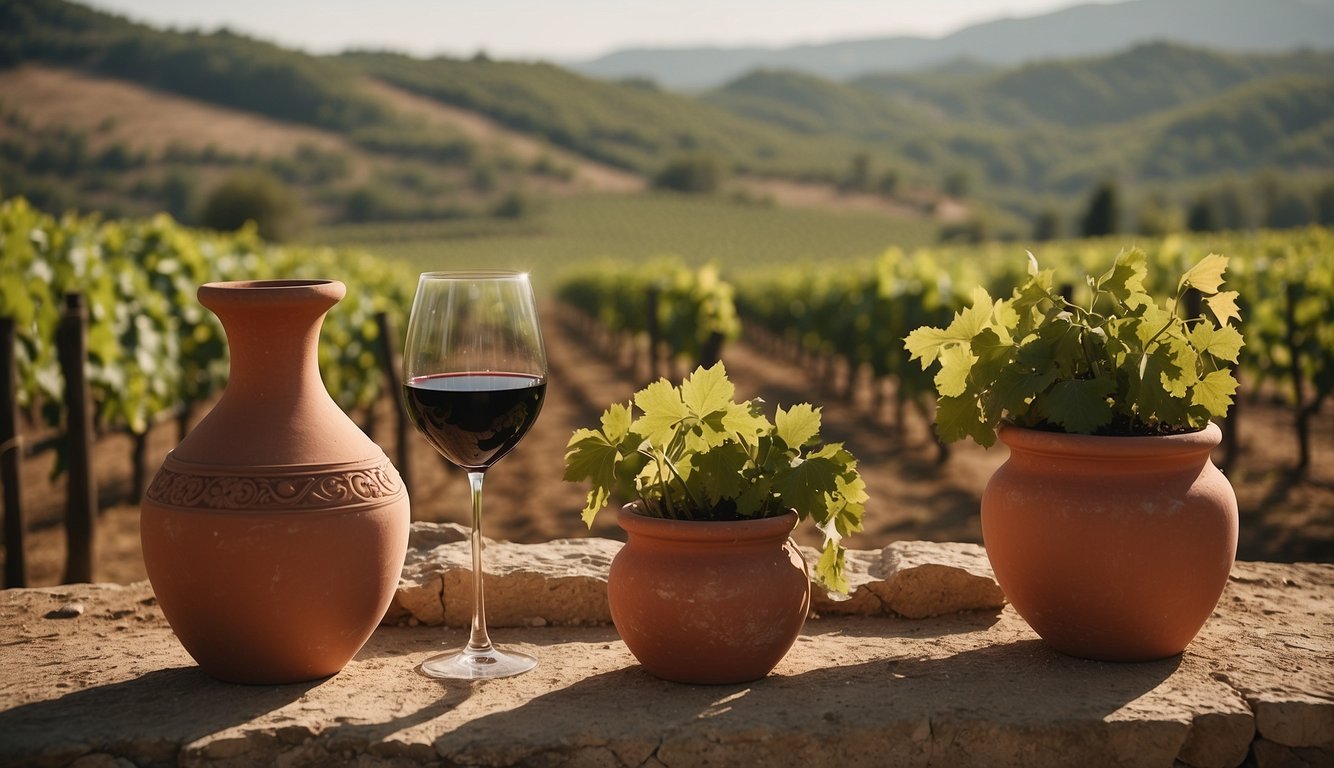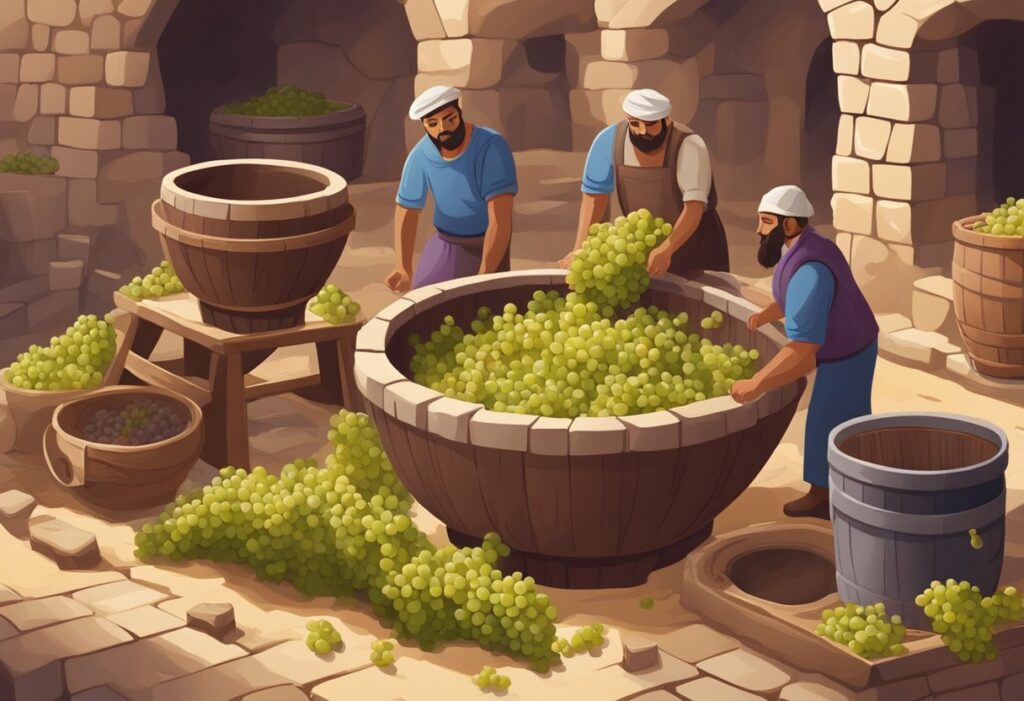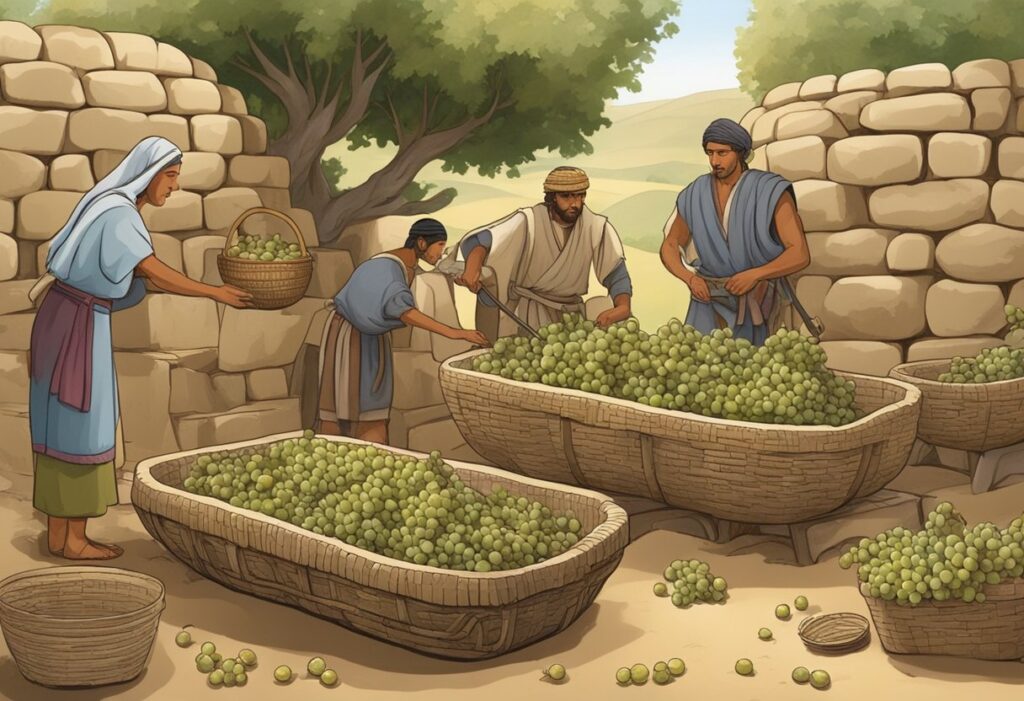Imagine a world where wine was not yet a staple of European culture. Thanks to the Romans, viticulture spread far and wide, changing winemaking forever. As you read further, you’ll see how the Romans not only loved their wine but also ensured its production boomed in regions like Bordeaux, Burgundy, and Champagne.

When the Romans conquered new territories, they brought their winemaking skills with them. Their enthusiasm for wine helped spread vine planting across the Mediterranean and Western Europe. The introduction of grape growing to new areas was a significant cultural and economic boost, influencing local traditions and trade.
Roman society placed a high value on wine, not just as a drink but as a cultural symbol. They refined winemaking techniques and created innovative ways to cultivate vineyards. By incorporating advanced methods, the Romans set a foundation for the thriving wine industries we know today.
Origins of Viticulture
Viticulture has rich roots, stretching back to the domestication of grapevines in Western Asia. Understanding ancient practices and viticultural varieties shows how early civilizations integrated grape growing into their cultures.
Domestication of Grapevines
The domestication of grapevines (Vitis vinifera) likely began in Western Asia and the Caucasus region. Over time, wild grape species were selectively bred for desirable traits. This early agricultural practice can be traced back to the Neolithic period.
Archaeological evidence points to ancient settlements where grape cultivation started thriving. As techniques improved, grapevines spread across the Eastern Mediterranean, becoming a vital crop in regions like Mesopotamia, Egypt, and later, Greece.
By the end of the Bronze Age, viticulture became more refined. People developed methods for planting, growing, and harvesting grapes. This marked the beginning of grapevine domestication, spreading through the Mediterranean with cultural exchanges and trade.
Ancient Practices and Varietals
Ancient practices in viticulture were a blend of tradition and experimentation. From early irrigation techniques to trellising systems (which support vines), societies enhanced grape production. Ancient texts and archaeological finds indicate a variety of grapes were grown, tailored to different climates and soils.
Egyptians, for example, stored wine in clay jars sealed with resin. Meanwhile, Greeks used amphoras for wine storage and transport. Romans further advanced these techniques, perfecting fermentation and storage methods. Their influence brought viticulture to Hispania and Gaul, spreading the cultivation of grapevines rapidly.
Ancient varietals were diverse. Early farmers discovered and nurtured grapes that suited their local environment. This experimentation led to the rich diversity you see today. Some ancient varieties still thrive, maintaining a link between past practices and modern viticulture.
Cultural Significance in Antiquity
Viticulture held profound cultural significance in ancient civilizations. Grapevines were more than just crops; they were entwined with social, religious, and economic life. For example, wine played a vital role in religious rituals and social gatherings.
In ancient Rome, Bacchus, the god of wine, was celebrated with festivals. These events emphasized the importance of grapevines in Roman culture. Furthermore, the integration of viticulture into Roman society spurred the economic growth of many regions. Areas like Bordeaux and Burgundy, now famous for their wines, owe their early viticultural success to Roman influence.
In ancient Egypt, wine was important in ceremonies and as an offering to the gods. This cultural integration showcases how ancient societies saw grapes and wine as essential parts of their civilization. The spread of grapevine cultivation reflects a deep-seated appreciation for its significance in daily life.
Roman Viticulture and Expansion
Roman viticulture significantly transformed winemaking practices, bringing about new techniques and expanding grape cultivation throughout the Roman Empire. Their innovations not only boosted local economies but also facilitated widespread wine trade.
Adoption and Innovation in Roman Winemaking
You can trace many winemaking techniques back to the Romans. They adopted methods from the Greeks and Etruscans and added their own innovations. For example, Romans improved grapevine cultivation techniques, such as trellising and pruning. They also developed large-scale wine production facilities called villae rusticae.
These innovations allowed for greater efficiency and quality control in winemaking. Romans stored wine in amphorae or large clay jars, which helped in aging and transportation. They also used additives like herbs and spices to enhance flavors. This active pursuit of innovation boosted both the quality and variety of wines available.
Spread of Viticulture across the Roman Empire
Roman viticulture spread extensively across the Roman Empire, reaching regions such as southern France, known today for the Rhone vineyards, and Gaul. Vineyards were established in these areas, leading to local wine production and trade.
The Roman Empire played a critical role in spreading grape cultivation to new territories. They introduced Italian grapevines to Spain and even ventured into parts of Germany. This expansion was facilitated by Rome’s advanced infrastructure, including roads that made it possible to transport wine across long distances.
Impact on Economy and Trade
The Roman economy benefited immensely from the wine trade. Wine production became a major agricultural product, influencing local economies in wine-growing regions. The demand for Roman wines both within and outside the empire drove increased production and trade.
Trade routes were established throughout the Mediterranean, allowing Roman wines to reach far-off markets. This not only boosted Rome’s economy but also helped integrate the empire through a shared wine culture. Roman wine trade networks extended to places like Egypt and reaching communities as far as India, showcasing the widespread influence of Roman viticulture.
Viticultural Techniques and Technologies

Roman contributions to viticulture involved advanced grape growing methods, innovative winemaking processes, and insights from notable authors that improved wine production significantly.
Grape Growing and Harvesting Methods
Romans introduced systematic vineyard management techniques that optimized grape production. They practiced selective breeding of vines to improve grape quality and yield. You might find interesting that Cato the Elder documented various vineyard layouts and pruning methods to maximize sun exposure and airflow. Romans also used GIS-like maps for locating ideal vineyard sites based on soil quality and climate.
Harvesting was timed to ensure grapes were at peak ripeness, which was crucial for producing high-quality wine. Grapes were handpicked and sorted meticulously, sometimes with entire families involved in the process. This attention to detail helped in producing wines that were both varied and of high quality.
Winemaking Processes and Storage
Roman winemaking involved several steps that are still in use today. Pliny the Elder described the use of treading vats where grapes were crushed by foot, which you can see as an early way to extract juice gently. The fermentation process took place in large terra-cotta pots, known as dolia, which were often buried underground to maintain a consistent temperature.
Romans developed advanced storage methods. They used various amphorae shapes for storing and transporting wine, ensuring it matured properly. Some amphorae were sealed with pitch to prevent oxidation. The introduction of wooden barrels later on improved wine aging and transport efficiency, contributing to the spread of Roman wine across the empire.
Contributions of Notable Roman Authors
Several Roman authors left a significant mark on viticulture. Marcus Terentius Varro provided extensive agricultural knowledge, detailing the best practices for vine cultivation. Lucius Junius Moderatus Columella wrote “De Re Rustica,” offering insights into vineyard care and grape varieties. He emphasized the importance of seasonal work and proper soil management.
Pliny the Elder and Palladius also contributed valuable information. Pliny’s “Natural History” includes descriptions of different grape species and their uses. Palladius offered practical advice for vineyard management in his work, “Opus Agriculturae.” These authors collectively influenced Roman viticulture by documenting and sharing effective techniques and technologies.
Their works serve as a testament to the ingenuity and thoroughness of Roman winemaking practices.
The Legacy of Roman Winemaking

Roman winemaking had a profound impact on modern viticulture. From new techniques to the spread of grapevines across Europe, the legacy of Roman practices continues to influence winemaking today.
The Transition to the Middle Ages
As the Roman Empire declined, winemaking techniques were not lost but adapted. Monasteries in medieval Europe became centers of winemaking. Monks preserved and advanced Roman methods, ensuring the quality of wine production.
You can see the legacy of Roman viticulture in the vineyards of France and Italy, where many practices are rooted in ancient Roman techniques. The spread of grapevines to regions like Portugal and the Mediterranean expanded the diversity of grape varieties and wine styles.
Roman Contributions to Modern Viticulture
Romans revolutionized winemaking with innovations like barrel aging and the use of specialized tools. They introduced the concept of terroir, which links the flavor of wine to the geography and climate of the vineyard.
Today, the influence of Roman winemaking is evident in both Old and New World wines. Techniques such as grafting and pruning, first pioneered by Romans, remain essential. The rich history of wine, from ancient Rome to modern wine regions, continues to shape our appreciation for this timeless beverage.

